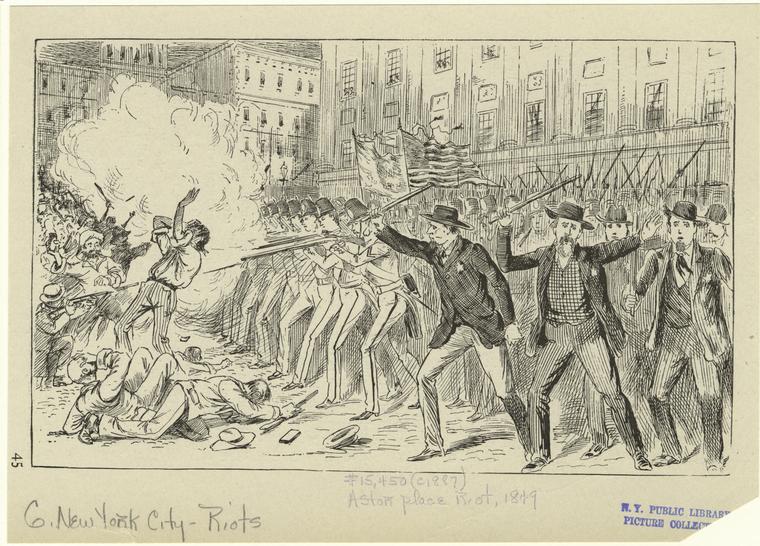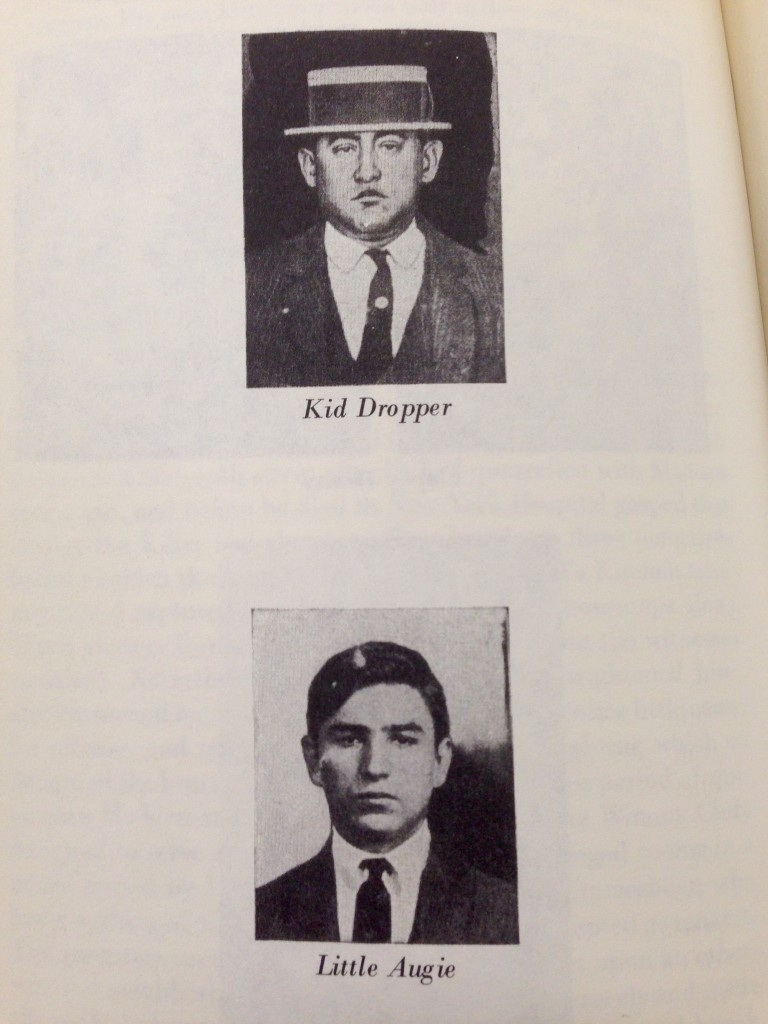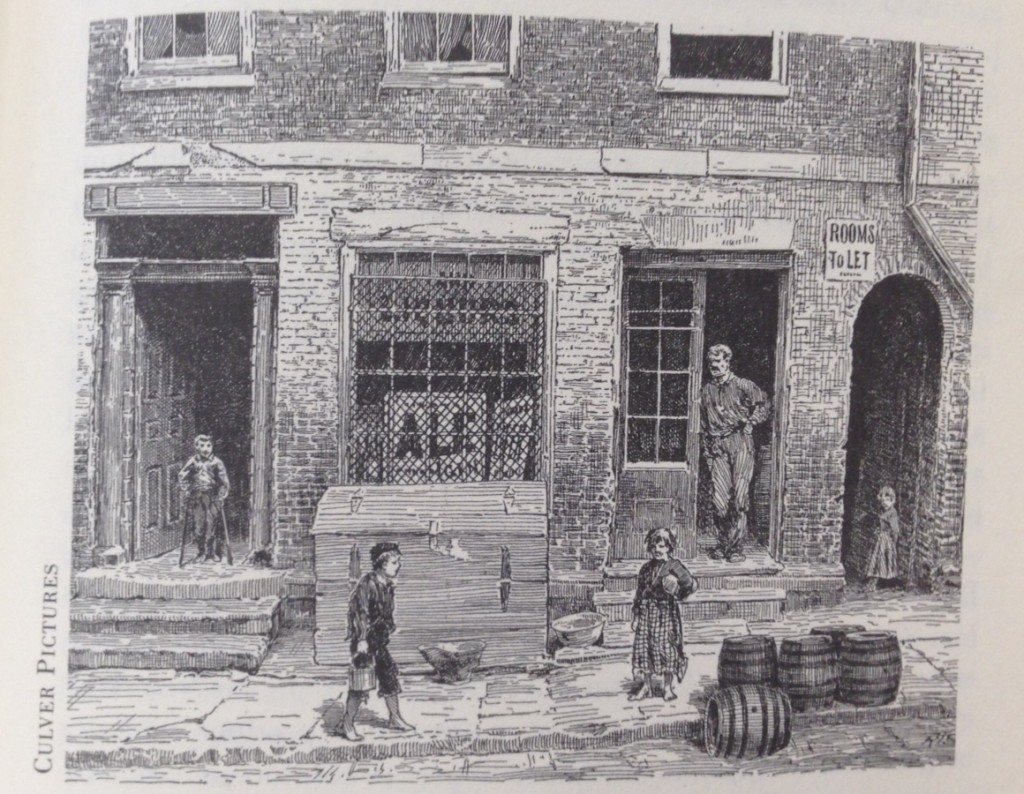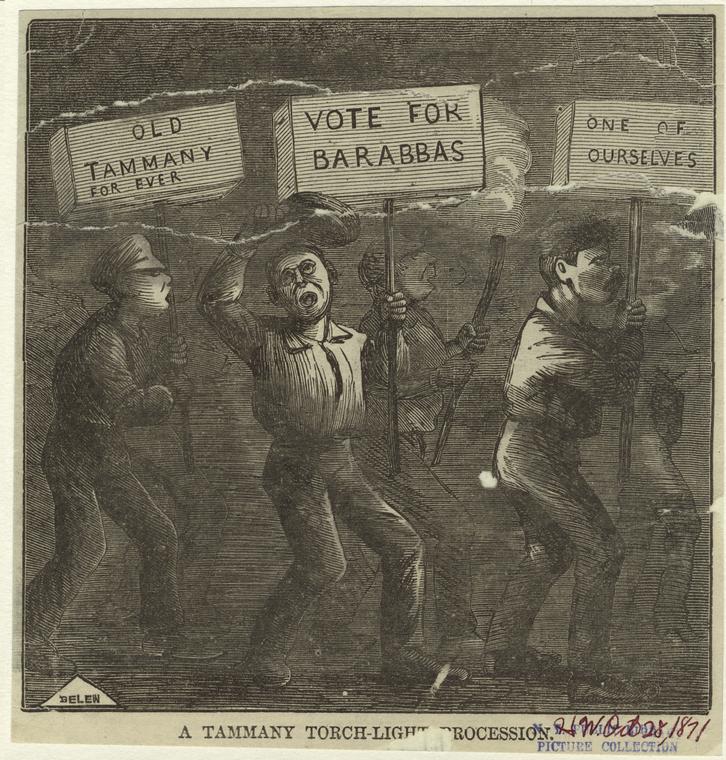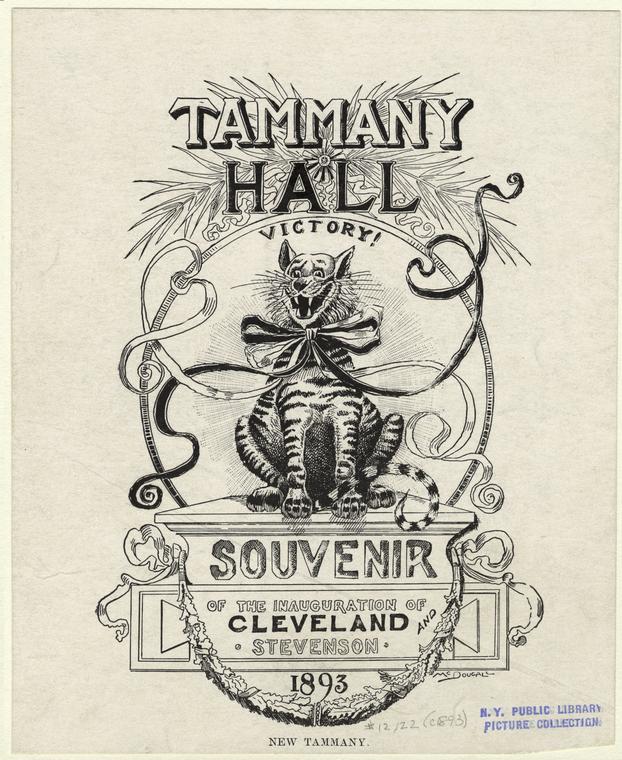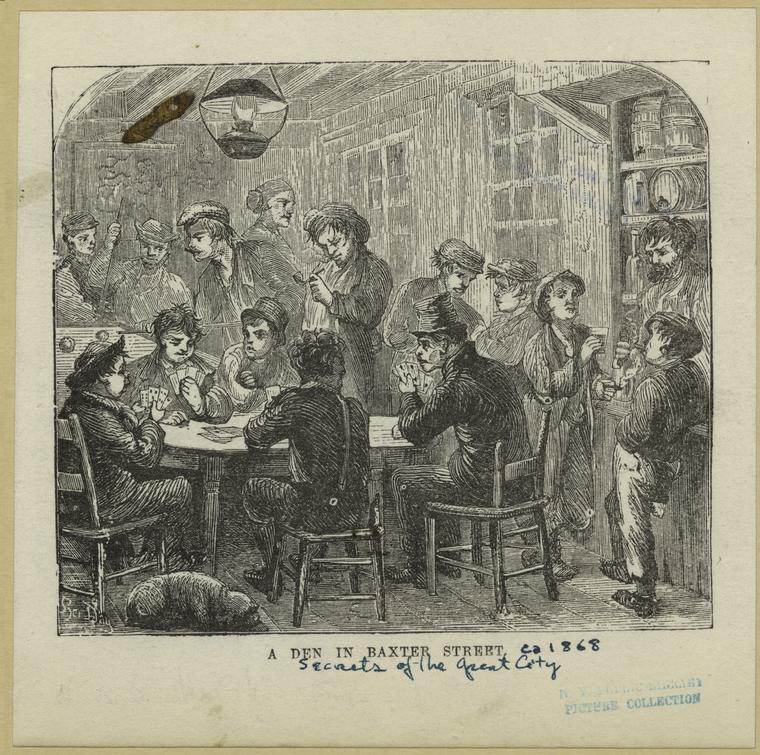The deplorable conditions of the Five Points neighborhood in 1829, the low-life impoverished criminals which resided in it, and the increasingly powerful corrupt figures seeking to take advantage of that situation coincided in the 19th century, thereby expediting the formation of gangs at that time.[1] In a sense, the “criminal underworld” as described in Herbert Asbury’s The Gangs of New York was a self-sustaining machine: the Five Points neighborhood fostered criminality, the low-level criminals sought asylum in one form or another from corrupt officials, and the corrupt officials utilized the low-level criminals to achieve their own ends, thereby solidifying the criminality of the Five Points neighborhood.[2] This environment of structurally supported crime allowed for the development and advancement of formalized gangs in the Five Points neighborhood. The dynamic served to help the gang bosses both to profit more extensively from crime, and distance themselves from the actual acts, for which the lowest-status criminals tended to be prosecuted.
What led to organized crime in Five Points?
Organized crime in the Five Points neighborhood was made possible thanks to the vulnerability of its impoverished population. The people of Five Points were often unable to scrounge together a living wage from a position of excruciating poverty, and were thus inclined to turn to unorthodox (to put it mildly) employment to make ends meet.[3] As a result of circumstances like these, in general, organized crime “preys and depends on the ghetto.”[4] As the Five Points neighborhood began to get overcrowded thanks to an influx of European immigrants, “the working class, especially those trapped in the casual labor market, were pushed into street trades and the informal underground economy,” trading contraband and engaging in voter intimidation, for example.[5] Placed in such a dire situation, both economically and in terms of the danger that pervaded the Five Points neighborhood, it became fruitful if not necessary to participate in the “criminal underworld.”[6] Making money by any means was an important task for survival.[7] This was compounded by threats of physical violence by gangs, which also contributed to the successful use of the struggling, low-class Five Points citizens as pawns of organized crime.[8]
The Poor as Criminal Pawns
The criminal masterminds within Tammany Hall made use the Five Points gangs by compensating them for criminal “dirty work” unbecoming of the more elite criminals, such as voter intimidation — establishing a symbiotic relationship and solidifying the criminal hierarchy that benefitted the existence of organized crime. As early as 1834, Tammany Hall began providing gangsters “with meeting and hiding places, [so] that their favor might be curried and their particular talents employed on election day to assure government of, by, and for Tammany.”[9] Beyond the direct assistance of the gangs, Tammany Hall also assisted impoverished, crime-ridden communities, thus acquiring the loyalty — and assuring the continued existence — of poor, small-scale criminals.[10] As a result, for example, Isaiah Rynders, Tammany Boss of the Sixth Ward, held significant influence over the Five Points gangs, to the point where the police would come to him to seek help quelling riots in the area.[11] Thus, power over the poor led to power over law enforcement, and the entire system protected itself. Later, Boss Tweed was venerated as a man who “never ‘squealed’, and was ‘so good to the poor.’”[12] In essence, in exchange for popularity, the loyalty of the group and assistance hustling elections, Tammany Hall provided necessary criminal infrastructure and turned a blind eye toward other forms of crime that were prevalent in the Five Points neighborhood and beyond.
Corruption keeps the “criminal underworld” alive
The corruption of law enforcement — particularly in the ways they could benefit from allowing crime to continue — both kept the “criminal underworld” alive and solidified the criminal hierarchy. Some law enforcement officials for example, “demanded payoffs from the owners of brothels and dance halls.”[13] In this situation, criminals could continue their societally harmful enterprise and the police could profit. The corruption of the police system stemmed from an unjust hiring practice: certain police officers “snared a spot by bribing local political leaders.”[14] Given that these leaders were themselves a part of or at least somehow collaborated with gang leaders, this led to a dynamic in which police officers were now on some level beholden to gangs — in addition to whatever personal threat they served as violent criminals. At one point, a riot being held in Hell’s Kitchen “degenerated into a police riot, with patrolmen actively aiding the white gangsters.”[15] Yet, at the same time, crimes which were committed by lower-level criminals continued to be prosecuted, at the benefit of everyone else in the criminal system. Pickpockets, for example, began to be punished “not only with increasing severity but with more rigor than murderers” in the aftermath of “public demands that the police suppress blatant lawbreakers”.[16] Thus, the police were able to maintain their profitable, corrupt ways by accepting “a percentage of [criminals’] stealings” while incarcerating petty thieves who served to benefit them very little.[17] This constituted a divide between the criminal masterminds and the goons that committed crime out in the open. Corrupt politicians, crooked police officers, and shrewd gang bosses assured one another’s success through their collective abuse of the poorest and most disadvantaged members of the Five Points community.
A self-perpetuating system
Crime in Five Points was a self-perpetuating system working to the benefit of everyone involved — with the exception of the incarcerated low-level criminals. Police officers bribed their way into their positions and tacitly or even directly assisted the whims of the gang bosses. Gang bosses were then able to direct crime with impunity, so long as they helped conduct the bidding of the corrupt politicians of Tammany Hall. Finally, Tammany Hall benefited from the loyalty of these powerful criminals and in exchange instituted political policies which assisted those criminals, even providing meeting and hiding places for gangsters to solidify their loyalty. All three of these criminal groups took advantage of the poor, desperate members of the Five Points neighborhood, who were often rewarded for their efforts with a one-way pass to Sing Sing Penitentiary.[18] police officers could appear to be doing their jobs by incarcerating low-level criminals, and gang bosses and political leaders could use them as pawns to commit crimes directly. Those on the lowest rung of the political ladder served as the stable base which made the criminal community of Five Points possible.
[1] Herbert Asbury. The Gangs of New York: An Informal History of the Underworld, reissue, (New York: Thunder’s Mouth Press, 1998), 1.[2] Tyler Anbinder, Five Points: The 19th-century New York City Neighborhood That Invented Tap Dance, Stole Elections, and Became the World’s Most Notorious Slum, (New York: Free Press, 2001), 331.[3] Anbinder, Five Points, 228.
[4] Eugene Doleschal, Anne Newton, and William Hickey. A Guide to the Literature on Organized Crime: An Annotated Bibliography Covering the Years 1967-81, (Hackensack, NJ: National Council on Crime and Delinquency, 1981), 61.
[5] Timothy J. Gilfoyle, A Pickpocket’s Tale. (New York: W.W. Norton and Company, 2006), 23
[6] Gilfoyle, A Pickpocket’s Tale, 28.
[7] Gilfoyle, A Pickpocket’s Tale, 29.
[8] Doleschal, et al. A Guide to the Literature on Organized Crime, 61.
[9] Asbury, The Gangs of New York, 34.
[10] Anbinder, Five Points, 331.
[11] Asbury, The Gangs of New York, 39.
[12] Anbinder, Tyler. Five Points, 331 (quotation); Breen, Thirty Years, 555.
[13] Anbinder, Five Points, 228.
[14] Anbinder, Five Points, 228.
[15] Asbury, The Gangs of New York, 233.
[16] Gilfoyle, A Pickpocket’s Tale, 70; Anbinder, Five Points, 233.
[17] Asbury, The Gangs of New York, 231.
[18] Gilfoyle, A Pickpocket’s Tale, 42.
